#manx legend
Explore tagged Tumblr posts
Text

A fairy of Manx folklore that brings good luck, though to get any of that you'd need to be lucky enough to run into one to begin with...
#BriefBestiary#bestiary#digital art#fantasy#folklore#legend#myth#mythology#fairy#faerie#fae#arkan sonney#manx folklore#manx legend#good luck#lucky pig#fairy pig
139 notes
·
View notes
Text

An art attack I did!
I have to post this here because I had fun doing this, and it is kinda a metaphor. I found a cool group of people after hitting bottom and was inspired by them to get back into a passion I thought I no longer had (much thanks to @sinedra for the gift of the drawing pad). I wish I could hug you all, but Vee will just love on your little dudes.
Dorian is barely able to breathe, Oswald is trying to escape, and Glitch will be washing that out of his fur for weeks.
Vee belongs to me
Glitch and Dorian belong to @notes28
Bay, Kiin, and Tek belong to @felinae-felidae
Alis belongs to @aystay
Oswald belongs to @fyurama
#arcane#arcane netflix#arcane league of legends#arcane oc#my art#vee#my oc#friend oc#art fight 2024#league of legends#glitch#dorian manx#kiin#bailey#tekkui#Alistair Vau#oswald#she loves them so much#they're all these big bad asses and then there is her#a small bean
16 notes
·
View notes
Text
To the people who want to learn a language because of their favorite media but feel like it's a stupid reason, just go for it! Learning a language is a fun and useful skill that can come in handy when you least expect it, especially if you live in a diverse area.
Not to mention it can help you understand the media you're consuming on a deeper level. Interacting with the fanbase from that culture can help contextualize choices made in your favorite anime, video game, or kpop song.
Why did this japanese game portray europe like this? What problems in korea is this kpop song about? What is this festival in my favorite anime about?
What are the translations missing? What has been localized and why?
It's so incredibly rewarding to be able to understand different perspectives from different cultures. It's amazing to be able to communicate with people different from you. Learn whatever language your little heart desires. Go forth.
#anime and manga#kpop#video games#japan#korea#language#mostly using japanese and korean as examples because people often want to learn those because of anime and kpop#im learning japanese because i want to understand the legend of zelda better#im learning korean because my workplace is right next to a korean market and many people who come by dont speak english#you dont need a 'good' reason to learn a language!!#im literally just learning german because my girlfriend speaks it#thats it#i dont even have a reason to be learning chinese#i just am#also learning spanish and asl but those fall into the ones america deems as 'useful'#manx on the other hand
17 notes
·
View notes
Text

Buggane from Manx Folklore.
The Buggane, in Manx legend, is an bulky subterranean creature with features akin to those of a mole. It is said to be in bodily appearance similar to a hairy version of the Scandinavian troll, with glowing eyes and massive tusks. Bugganes, as magical creatures, can not cross running water or tread on hallowed ground. Occasionally, fairies may use Bugganes as a sort of hired muscle, having them punish people who have offended them.
A shapeshifter, the buggane is generally described as a malevolent being that can appear as a large black calf or human with ears or hooves of a horse. Another tale describes it as a huge man with bull's horns, glowing eyes, and large teeth.
The most famous tale tells of a buggane who unintentionally ended up on a ship heading to Ireland. He was determined to return to the Isle of Man, so he created a storm and directed the ship towards the rocky coast of Contrary Head. However, St. Trinian intervened after the captain promised to build a chapel in his honor. With the saint's guidance, the ship safely reached Peel Harbour. The buggane, furious, exclaimed, "St. Trinian should never have a whole church in Ellan Vannin." When they tried to build the chapel, the local people had to put a roof on it three times because the buggane kept tearing it off.
Despite its defeat, the roof was never replaced, and the roofless church can be visited to this day.
Follow @mecthology for more myths and lore.
Pic: Generated with AI
Source: Cryptidwiki and Wikipedia.
#mecthology#supernatural#mythology#mitoloji#weird#follow#legends#buggane#manx#folklore#faery#troll#manxfolklore
27 notes
·
View notes
Text
I kinda like how the Mega Man eras end up going full circle with its tone. Classic starts light hearted, X gets dark, Zero gets Darker, ZX goes back to the same tone as X and finally Legends brings all back to light hearted.
1 note
·
View note
Link
#meyers#meyers manx#manx#buggy#retro meus'auto#retro meus'auto 2022#madine#rêves d'automobiles#insolite#legend#Oldtimer#car#vehicule#voiture#automobile#photo
0 notes
Text
Sorry for the wait in making this post. I needed access to my university library. Then life got in the way in allot of ways ANYWAY
Reading list for Scottish contributions
So, some foreground before I get into the list. To understand Scotland relationship to gaelic mythology and folklore, you have to understand the great forger James Mcpherson, a romantic poet who wrote Ossian a loosely adapted telling of both the fenian and Ulster cycle in the style of Homeric poems which he claimed to have translated from manuscripts of actual epic poems. Mcpherson was the defacto .national poet of Scotland for a brief time when his work achieved enough popularity in the continent an example of its popularity is it was read by Napoleon to his troops before battle and inspired several great romantic paintings anyway this created a controversy during the Irish antiquitarian movement of the 1800s and the Ossianic society was founded by major Irish scholars which was one of the first major publications to study irish traditional fenian literature. This inspired a simmilair fervour in Scotland. The most important of these Scottish scholars, in my opinion, is John Francis Campbell of Islay, whose work Leabhar na Feinne : heroic Gaelic ballads collected in Scotland chiefly from 1512 to 1871
It is a great starring point for the contributions of Scotland, which is mostly centralised in heroic ballads for the period specified. In his popular tales of the west Highlands he also goes into some unique Scottish material and a study of the folkloric development of these tales
A more modern and broad survey of fenian texts in Irish and Scottish Gaelic can be found in the Fenian Cycle in Irish and Scots-Gaelic literature by Joseph J. Flahive which works as an introduction to the entire literary corpus. Of the fenian cycle which takes its place as the head of Scottish gaelic mythographical tradition
The book covers the literature in general mind , whilst not making the common omission of Scottish Gaelic Material its discussion is mostly centralised on how , why and where these texts fit in with the tradition and its history with summaries of major texts. The Edinburgh companion to Scottish traditional literature, is a good supplemental to this as it has a section devoted to Gaelic Heroic ballads, which goes into why these traditions are shared and how they were composed
Im by no means an expert on Manx legend but much less work has been done as far as I know on the manx end of things since the 19th century with publication of some manx legends but from what I've read of those books I can summarise here. Essentially, the presence of the pan-Gaelic mythology on the Isle of man is limited to some scattered mentions of fionn , Manannan and Cu but there are many gaelic elements to manx folkore and tradition in story telling type and linguistic elements. Manx legends are also very germanic influenced and you end up with scenarios where a Norse king uses a sword named following gaelic conventions in a more irish story type.
This dissertation presents some of the myths and studies them in a comparative mythology sense and offers probably the best study on the presence of gaelic heroes in Manx legends since this book from nearly 100 years before it. Though neither is dedicated to studying the shared nature of manx legend with the wider gaelic world
Gaelic Mythology and why not exclusively Irish Mythology
I often see posts by well meaning students of Gaelic folklore and the traditional literature portraying it as "Irish mythology " a term I personally dislike especially when in regards to the Fenian Cycle. Now this may seem like I'm dredging up old beef the ossianic society settled 140 years ago but it's always irked me.
Up until the 16th century Ireland and the Scottish gaels had a shared literary establishment and did not live in isolation. In particular the oral tradition of Fionn and his companions has carried on this in oral tradition in some extent to the modern day. Examples such as the Glenmason manuscript of the Táin bó Flidaise show there was a shared tradition in literature production.
Saying Irish mythology alone in my opinion kinda disregards the extent Scottish gaels have contributed to the survival of these traditional stories and history. In the case of the fenian cycle whilst Ireland was rightly protective of Fionn opposed to Fingal in wake of the ossianic controversy saying Fionn is a hero of Irish myth rather than a hero of myth centered on Ireland (Scottish fenian cycle literature doesn't often exclusively claim the fianna for Scotland) who was also a hero of Scotland seems to have been a nationalistic pursuit one the Scottish engaged in equally but to less success. As for the ulster cycle it's extent of survival in Scotland is more minor but the contributions of Scottish gaelic scribes and poets to the cycle cannot be ignored.
On this premise then that the term Irish mythology is restrictive and does not represent the shared cultural ownership is gaelic Mythology or Gaelic folklore always a better term. In my opinion not always but generally especially when referring to specific traditional literatures. In the case of the Fenian cycle however I prefer the term "Matter of Ireland" a term I have not coined but cannot remember where I saw it (if you know please tell me) . I prefer this term because it captures the transformative nature of the fenian cycle with focus on its subject being Ireland and also reminiscent of its romance contemporaries of the matter of Britain and France.
You aren't bad People for saying Irish mythology I just prefer not to say it because of these personal reasons and I think in some cases better describes it
17 notes
·
View notes
Text
Genshin Character Names' Meanings Pt.2
Well, since we've got an announcement of our crane mom Cloud Retainer (or it's Xianyun now, I guess) and Gaming (no, not gaming Gaming, but like Ga Ming Gaming, you see), I thought it would be a great reason to sit down and make a compilation of all Liyue characters' names. Once again, I'll be glad if you tell me whether there are some mistakes, and have fun!
~~~~~~~~~~~~~~~~~~
Xiangling | From Chinese 香 (xiāng) meaning «Fragrant» and 菱 (líng) meaning «Water Caltrop» - Chinese Name
Xingqiu | From Chinese 行 (xíng) meaning «Carry Out», «Execute» or «Travel» and 秋 (qiū) meaning «Autumn» - Chinese Name
Chongyun | From Chinese 重 (chóng) meaning «Layer» and 雲, 云 (yún) meaning «Cloud» - Chinese Name
Hu Tao | Hu (胡, her surname) can mean «Doing things out of order or recklessly»; it's also present in «Butterfly» (蝴) and Tao (桃) is «Peach Tree» in Chinese, associated with longevity, immortality, and a sacred object - Chinese Surname and Name
Qiqi | From 七 (qī) meaning «Seven» - Chinese Name
Baizhu | From Chinese 白 (bái) meaning «White», «Pure» and 朮, 术 (zhú) meaning «Glutinous Millet» - Chinese Name
Yaoyao | From 瑶 (yáo) meaning «Jade», «Precious Stone» or «Beautiful» - Chinese Name
Yanfei | From Chinese 烟 (yàn) meaning «Smoke», «Vapor» and 绯 (fēi) which is for «Crimson», «Scarlet» - Chinese Name
Yelan | Literally «Night Orchid» in Chinese
Beidou | Named after the Big Dipper asterism, which is known in Chinese as 北斗 (Běidǒu). The name literally means «Northern Dipper». Interesting how it is also referred to as 北斗七星 (Běidǒu Qīxīng), lit. "Seven Stars of the Big Dipper" in Chinese. The North Star, Polaris, is located within this asterism and is used by sailors to navigate at sea. Yes, the name of the organization Qixing also consists of the same hieroglyphs, and the titles of the members of the Qixing are the same as the Chinese names for the stars in the Big Dipper
Xinyan | From 辛 (xīn) which is «Spicy» and 焱 (yàn) meaning «Fire», «Flame» - Chinese Name
Yun Jin | Yun (云) means «Cloud», and Jin (堇) means «Violet (plant)» - Chinese Surname and Name
Gaming | From 嘉 (jiā) «Praise», «Joyful» or «Auspicious» and 明 (míng) meaning «Bright», «Clear-sighted» or «Honest» - Chinese Name
Xiao | 魈 (Xiāo), which derived from a chinese legend "魑魅魍魉” in which there is a group of demons. although its mainly four demons
Alatus | Literally «Winged» in Latin
Shenhe | Most likely from 申 (shēn) meaning «State» and 鹤 (hè) meaning «Crane» - Chinese Name
Xianyun | 闲云 (xián yún), comes from a four word idiom 闲云野鹤 - «Drifting clouds and wild crane» It means people who are footloose and fancy-free
Ganyu | From Chinese 甘 (gān) meaning «Sweet» and 雨 (yǔ) meaning «Rain» - Chinese Name
Keqing | From 刻 (kè) «To Carve» and «Clear/Sunny» (qíng) - Chinese Name
Ningguang | Literally «Frozen Light» or «Concentrated Light» in Chinese
Zhongli | 钟 (zhōng) translates to clock and 離, 离 (lí) - «To leave», yet together they form 送钟 (sòng zhōng /song jong), which sounds exactly like the Chinese words for «Attending a funeral ritual» (送终 -sòng zhōng) and thus it is bad luck to gift clocks or watches - Chinese Name (and an interesting game of words)
Morax | Comes from Duke and Governor Morax, the 21st of Goetia Demons
Ping | 萍 (píng), means «Tender», «Natural» and «Friendly» - Chinese Name
Guizhong | From Chinese 歸, 归 (guī) meaning «To return» and 終, 终 (zhōng) meaning «To end» - Chinese Name
Osial | May be a portmanteau of Ose, the 57th of Goetia Demons
Beisht | Is likely derived from the Beisht Kione Dhoo (Manx: "Beast With the Black Head"), a creature from Isle of Man folklore, where "Beisht" means «Beast» or «Worm» in Manx.
Marchosias | Comes from Marquis Marchosias, the 35th of Goetia Demons
Havria | Could possibly be a form of Havres, another name of the 64th of Goetia Demons, Duke Flauros.
~~~~~~~~~~~~~~~~~~
Phew, that was probably the hardest one. There is still Inazuma up ahead, yet I at least have some knowledge in Japanese, while with Chinese names I had to look up every single one (I mean, I will double-check Inazuman names of course, it's just that I'm more sure about the meanings of some of them).
'Till next time!
#xiangling#genshin impact xingqiu#xingqiu#genshin impact chongyun#chongyun#genshin impact#genshin impact hu tao#hu tao#genshin impact qiqi#qiqi#genshin impact baizhu#baizhu#genshin impact yaoyao#yaoyao#genshin impact xinyan#xinyan#genshin impact yanfei#yanfei#genshin impact yelan#yelan#genshin impact beidou#beidou#genshin impact yun jin#yun jin#genshin impact xiao#xiao#genshin impact shenhe#shenhe#genshin impact ganyu#genshin impact liyue
83 notes
·
View notes
Note
apologies for the intrusion. i was wondering if you had any more fav folklore/mythos books, from that last ask? could be recent too! (i am a very curious lil gremlin).
Not intruding at all :D
I gave most of my favourites in this ask, but I want to add Mark Norman's Black Dog Folk Lore – it's an incredibly well-researched and detailed look at the folkloric figure of the black dog (church grimms, barguests, shucks, spectral apparitions, death omens, etc.). Will admit I haven't finished it yet because the book clearly suffers from a lack of an editor and I need to be in the right headspace to look past that, but in terms of informativeness it's great.
Another one I read recently that has become a favourite is Arthur Moore's Folk-Lore of the Isle of Man. It's up there with Sophia Morrison's Manx Fairytales (which is still on my TBR list) as one of the greatest collections of Manx folklore and traditions, and it definitely lives up to its reputation imho.
Also, just finished the most recent instalment in Stephen Fry's Mythos series, Odyssey, and I continue to love Fry for retelling the Greek myths in a way that's more accessible for a modern audience while interspersing the storytelling with facts about the history/his sources.
And on the subject of Greek Myth retellings, I also enjoyed Natalie Haynes' Stone Blind. Haynes' podcast, Natalie Haynes Stands up for the Classics is absolutely brilliant, too: a lot of it focuses on historical figures, but she has episodes on Medusa, Athene, Demeter, the Odyssey, the Illiad, Artemis, Aphrodite, and a bunch of other mythological and semi-mythological figures. Each episode is usually a little under 30 minutes and they're a great blend of comedy and information from someone who clearly knows her stuff (I say this as someone who generally doesn't get or enjoy comedy).
Lastly, can't believe I forgot this one in that last ask, but The Reader's Digest Folklore, Myths and Legends of Britain is just. phenomenal. It's tough to get your hands on because it's out of print & copies are usually pricy (my copy lives wrapped in plastic in a drawer because it smells of damp but replacing it would be expensive) – but it's currently up on The Internet Archive! The list of contributors alone speaks to how comprehensive and well-researched this book is, and it's so easy to just dip in and out of the bits that interest you, the illustrations and figures are gorgeous, and it's. it's so good. genuinely my best flea-market purchase ever.
19 notes
·
View notes
Text
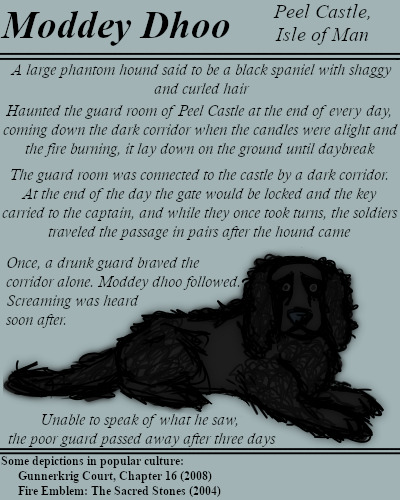
A mysterious hound who once haunted the soldiers of Peel Castle nightly. Despite having grown used to its presence, the soldiers could sense the danger it posed. That is until the night one guard's wits were clouded by drunkenness.
While the horrors the guard witnessed remain unknown, the hound's favored passage was sealed, so that the beast would never have the opportunity to do it again.
#BriefBestiary#bestiary#digital art#fantasy#folklore#legend#myth#mythology#legendary dogs#manx folklore#manx legend#moddey dhoo#black hound#peel castle#mauthe doog#phantom#ghost
39 notes
·
View notes
Text

Vee, you are the size of small child. Stop antagonizing people three times your size.
@notes28 owns Mr. Dorian and all his glory
#arcane oc#arcane netflix#arcane league of legends#vee#dorian manx#vee and friends#he is gonna toss her is she doesn't shut up#arcane#my art
5 notes
·
View notes
Note
i'm so sorry about your baby : (
she looks like such a sweetheart
-sculpture anon
thank you beloved ;; and yes, she truly is... to me anyways AHAHAHA her government name is Sassy (though legend says her real name is Sasquatcha) BUT we normally call her Chachi because my nickname for my husband is Zassy and Sassy/Zassy sound virtually the same in Spanish sooooooooooooo! but we also call her mamas, mamash, Chachi-baba, Chachi-mamas, Baby-mamas, Chacholita, and more I'm definitely forgetting
she's 13 years old and has been fighting breast cancer since 2021!
she's definitely a one-person kind of cat lol. she has only ever been 100% comfy with me like i can pick her up and pet her anywhere no problem but anyone else and she's got beef lol
she has a stumpy tail!!!!! she was born with it :3 i recently got her dna results back and she isn't a manx but it did note she has the phenotype (or w/e it is) for having a short tail LOL
i love her endlessly. she's been with me since middle school and i pretty much snuck out of my house, walked to the house i got her from, walked back with her flea-ridden butt in my bag, and kept her in my room. we've always had a ton of cats but i didn't want to ask and them say no so i just brought her home LOL but my dumbass didnt realize the whole arrangement could be seen on facebook so my parents knew AHAHA
yea... a part of me is going to go when she does










14 notes
·
View notes
Text
Leanan Sídhe - Day 74
Race: Femme
Arcana: Lovers
Alignment: Neutral-Chaos
July 18th, 2024

Before doing this series, I never really realized how many demons originate from Ireland. Whether it be Cait-Sith, Dullahan, or even Fionn Mac Cumhaill, a lot of Irish fairy tales influence this series, though I suppose it only makes sense, given that Irish fairy tales also influence almost all fantasy to this day. Concepts of fairies, stories of great battles and legendary heroes, even things as simple as a name- all of them can be passed around, and many of them seem to come from the mystical medieval age of Irish tradition. Today's Demon of the Day is no different, of course- the powerful seductress, Leanan Sidhe, the Fairy Sweetheart.
The concept of a seducer who woos men's hearts is not unheard of, even in this series- a famous pair of demons to come to mind are, of course, Succubus and Incubus- but the Leanan Sidhe are portrayed in a far softer light than those who would suck the life out of their lovers. Instead, a lot of the time, these fairies are marred with tragedy- their love, once met, would lead to an inevitable death, though still one filled with passion.
From what I can tell, the Leanan Sidhe does not originate from one specific myth, and is instead a fairy referenced as common knowledge in most texts. Originating from the lands of Gael, and found referenced along the Manx as well, this fairy is a relatively well-known figure in spite of concrete primary sources due to most of her stories being passed down by word of mouth. The first concrete reference to the Leanan Sidhe, however, comes in the form of a book by Jane Wilde called 'Ancient Legends, Mystic Charms and Superstitions of Ireland,' which goes over the role of the figure in detail and what she can do. To quote,
The Leanan-Sidhe, or the spirit of life, was supposed to be the inspirer of the poet and singer, as the Ban-Sidhe was the spirit of death, the foreteller of doom. The Leanan-Sidhe sometimes took the form of a woman, who gave men valour and strength in the battle by her songs.
The story also goes into detail about a myth pertaining to the Leanan-Sidhe, talking about a tale in which a king went away from his home for years, only to come back and see it fallen into a home of debauchery. Devastated, he called upon a poetess, whom, unbeknownst to him, was a Leanan Sidhe, and she inspired the man to strike back and get his kingdom back. From this, as well as many other later, additive sources, the Leanan Sidhe was a gorgeous woman who seduced young men and women and gave them inspiration in exchange for a quick path to an early grave. They don't appear to be outright evil, rather wishing to inspire those they come across, in spite of their swift bringing of death. Alas.
In SMT, the demon is portrayed as... well, a beautiful woman. Not much else they can do there. I'm unsure as to the significance of the tongs in her hands, as they may be knitting needles, perhaps signifying creativity and inspiration, but for the most part, she's depicted very well. I don't have much else to say, unfortunately, but overall, I really do enjoy this demon and the small, yet satisfying story behind it!
12 notes
·
View notes
Text

The Buggane is a monstrous creature from Manx folklore, brought to life in Hungry Horrors. Lurking in dark caves, this towering beast uses its Tremor ability to confuse and disorient the princess. Can you survive its wrath?
Add Hungry Horrors to your Steam wishlist https://bit.ly/4gkv0X4
Buggane Facts
The Buggane is a terrifying creature from Manx folklore, often depicted as a large, hairy, goblin-like monster. It features prominently in Hungry Horrors and offers unique challenges to players.
Key Facts:
1. Origin: The Buggane hails from the Isle of Man and is said to haunt caves, ancient ruins, and even old churches. These creatures are associated with destruction and mischief, often targeting buildings or individuals who disturb them.
2. Appearance: Typically described as a towering, ogre-like figure with long, matted hair, sharp teeth, and claws, the Buggane is known for its fearsome strength. In some tales, it is said to have magical powers, allowing it to grow or shrink in size at will.
3. Behavior in Folklore: Bugganes are vengeful and destructive creatures. One famous tale tells of a Buggane tearing the roof off a church because the builders continued to work after sunset, violating a local taboo.
4. Role in Hungry Horrors: In Hungry Horrors, the Buggane’s special ability is Tremor, where it jumps, causing the princess to become dizzy and confused. It’s a dangerous foe that can disorient players, making it hard to prepare food or fight back.
5. Habitat: Like in its folkloric origins, the Buggane in Hungry Horrors resides in dark, damp caves. Its cavernous home reflects its origins from ancient legends where Bugganes are known to lurk in secluded, forgotten places.
9 notes
·
View notes
Text
Dubois' bibliography: Fairy books (1)
I talked a LOT before of Pierre Dubois, his famous "Fairy/Elf/Lutin Encyclopedias", his collections of fairytales, and so forth and so on. And yes we have to agree that he has a very free, inventive, poetic style when it comes to retelling the various myths and legends surrounding the fair folk and other supernatural beings. As such, while his books are very entertaining and very beautiful, they are not to be used as a serious research material and can be quite misleading between Dubois' personal inventions, crafted genealogies and fictional history of "Elfland"...
BUT the wonderful and very pleasant thing with Dubois is that at the end of each of his Encylopedias he leaves us with a complete bibliography of all the books he used when writing them. I have rarely stumbled upon such complete bibliographies about the "fair folk", "good neighbor", petit peuple" and so forth, and while it goes a bit beyond what this blog is about (fairy tales proper), I still thought of sharing some of it here because my Dubois posts were all here.
Now, I can't share the entirety of the bibliography because it would be too big. However what I will share is all the books Dubois placed in his bibliography... in English. Indeed, Dubois reads the English and as such a good chunk of his bibliography is English-speaking (there are also some Spanish, Italian and German books in his lists). As such, if you are an English speaker you can easily go check these texts. (Note, this comes from his bibliography of his "Encyclopedia of Fairies", so that we stay within the "fairy tale" theme of this blog)
Tolkien's On Fairy-Stories
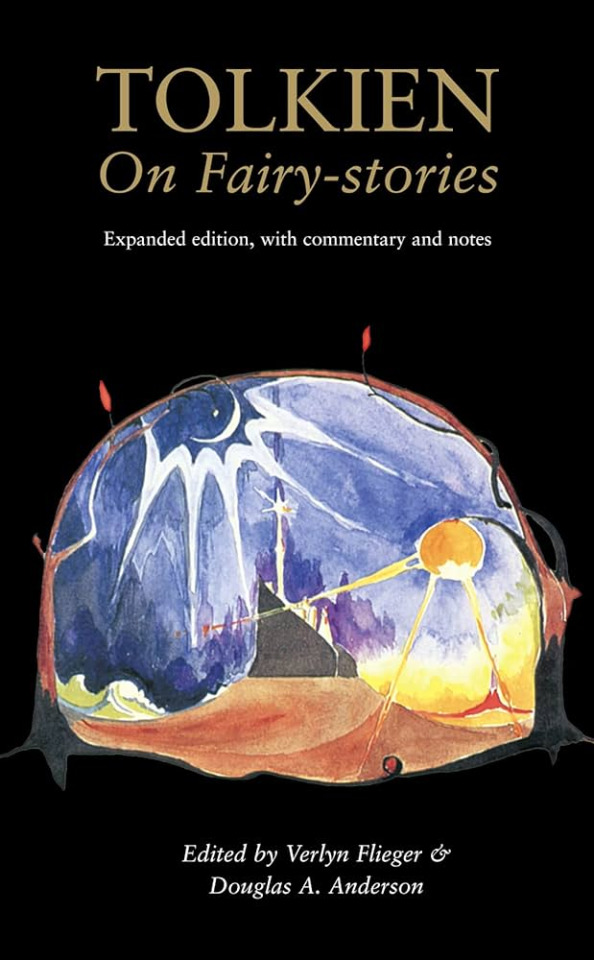
Beatrice Phillports, Mermaids
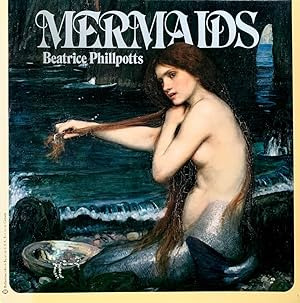
Richard Carrington, Mermaids and Mastodons
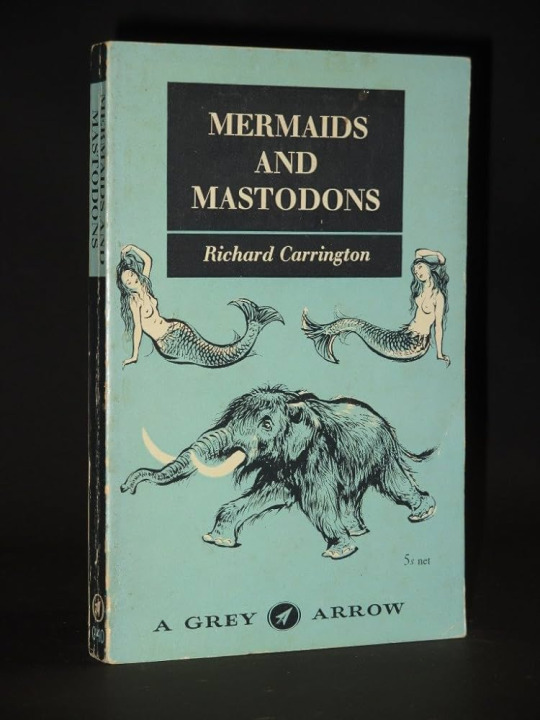
Gwen Benwell and Arthur Waugh, Sea Enchantress
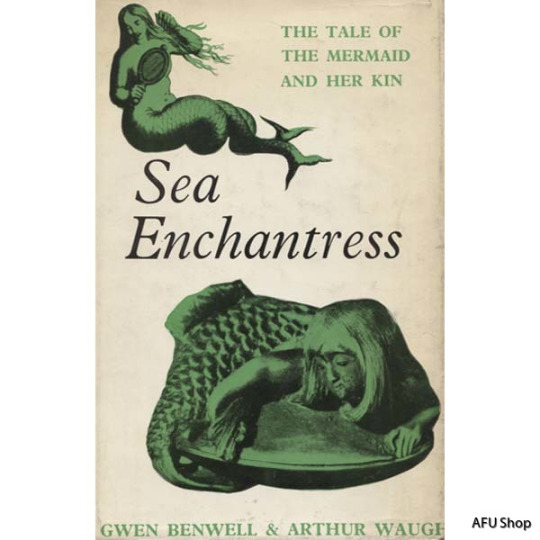
The Lost Gods of England, Brian Branston
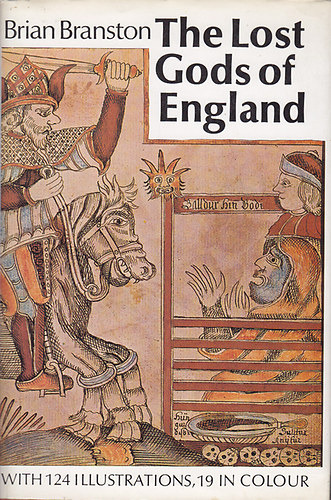
Wilfrid Bonser, A bibliography of folklore

Masaharu Anesaki, Japanese Mythology (also known as the History of Japanese Religion)

F. J. Child, The English and Scottish Popular Ballads
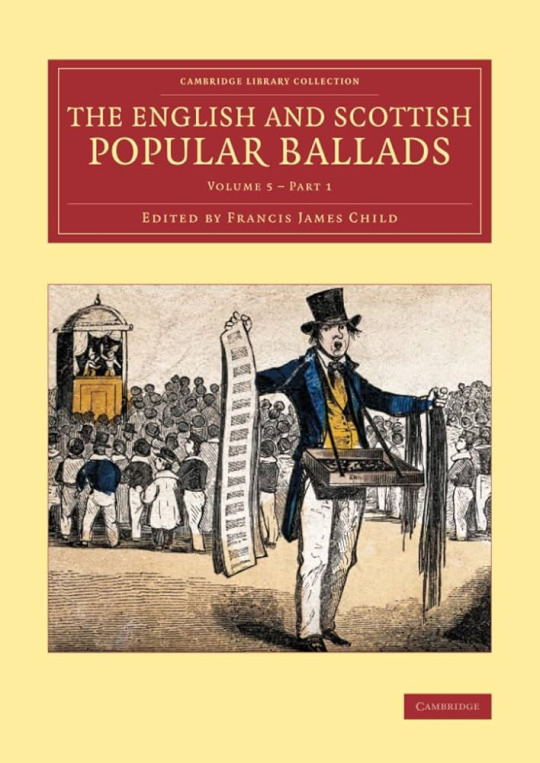
Moncure Daniel Conway, Demonology and Devil Lore

T. C. Croker, Fairy Legends and Traditions of the South of Ireland
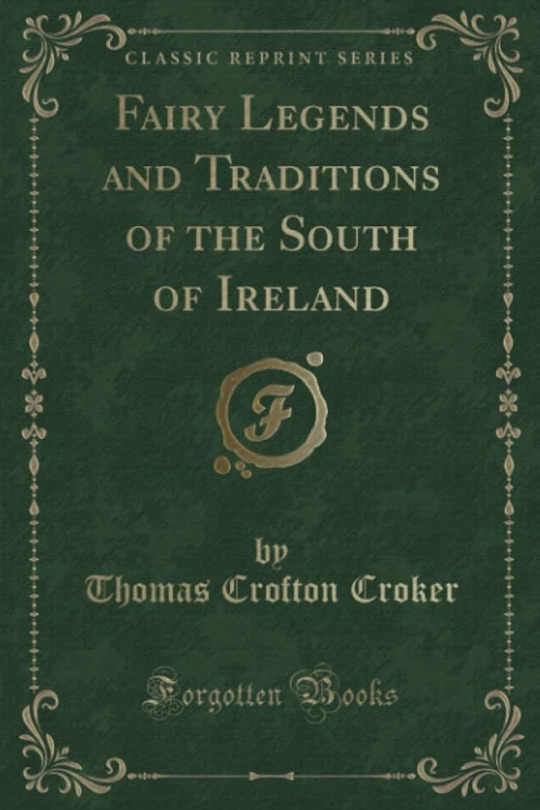
N. Belfield Dennys, The Folklore of China [The book has the very unfortunate subtitles "and its affinities with that the Aryan and Semitic races", but it was written in the 19th century so...)

David Crockett Graham, Songs and Stories of the Ch'uan Miao

Thomas Keightley, The Fairy Mythology
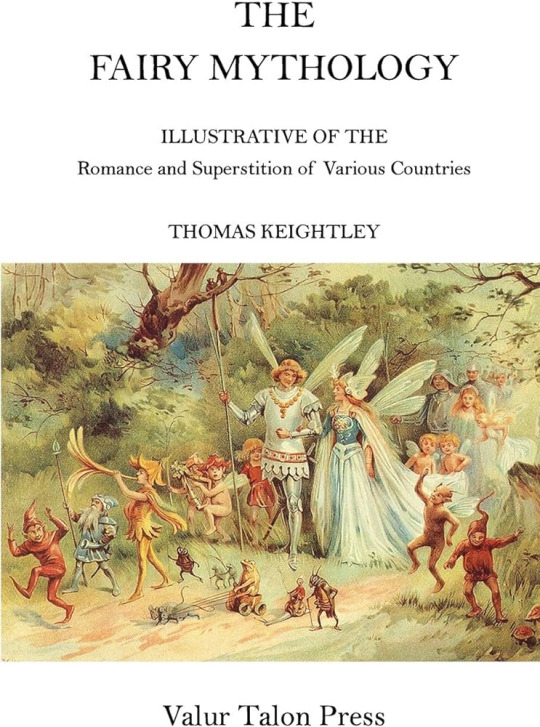
P. Kennedy, Legendary Fictions of the Irish Celts

John Rhys, Celtic Folklore: Welsh and Manx
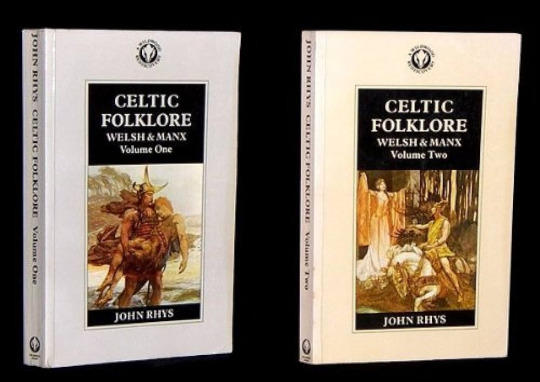
Sir George Webb Dasent's translation of Popular Tales from the Norse
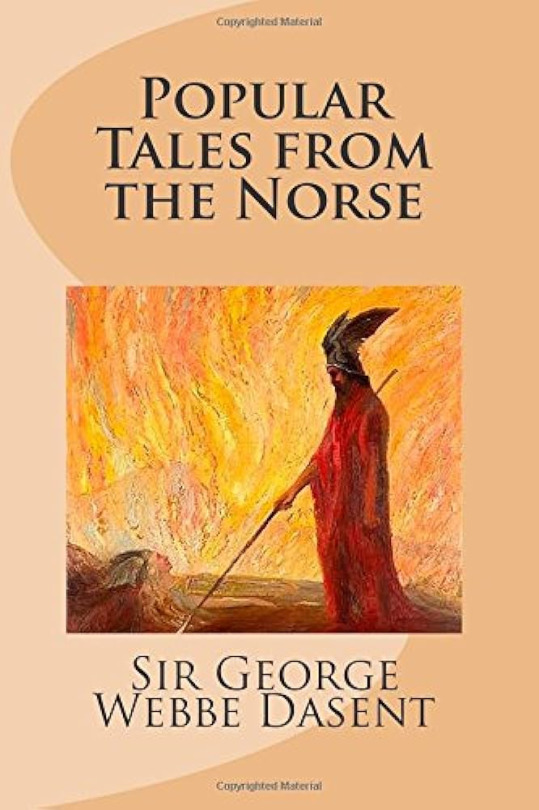
The Norse Myths (as rewriten by Crossley)
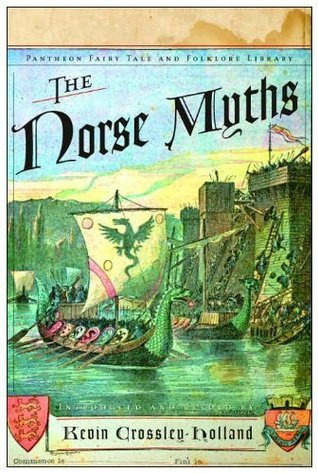
Delaporte Press' Great Swedish Fairy Tales, illustrated by John Bauer
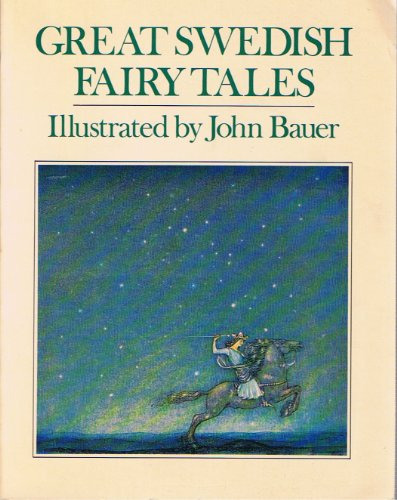
Inger and Edgar Parn d'Aulaire, D'Aulaire's Trolls (also known as D'Aulaire's Book of Trolls)
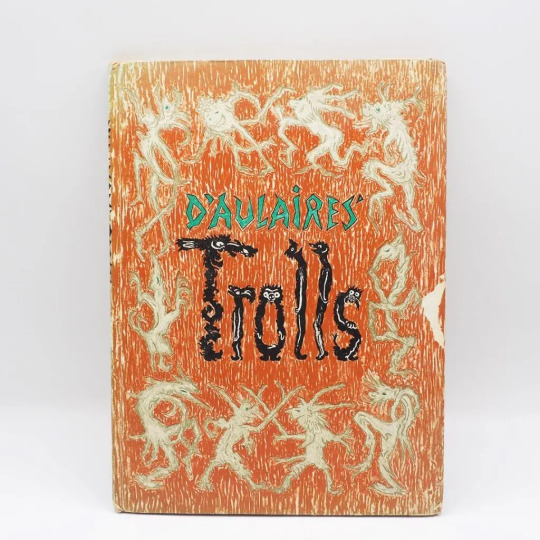
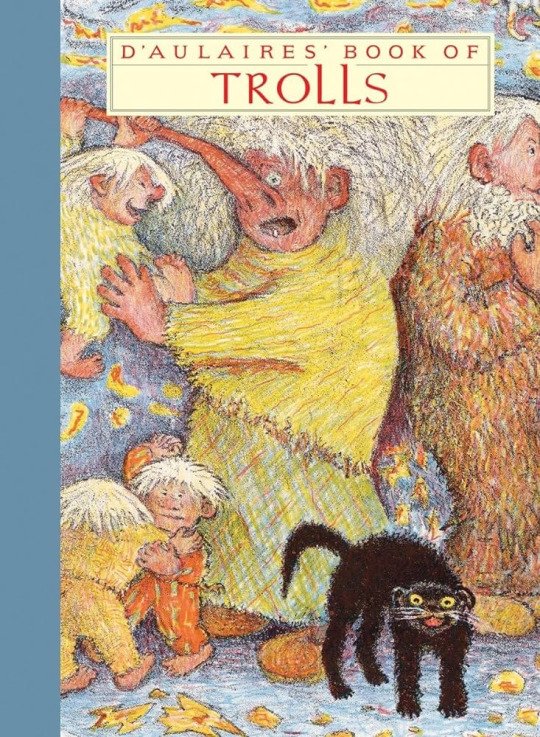
The Florence Ekstrand edition of Theodore Kittelsen's Norvegian Trolls and Other Tales
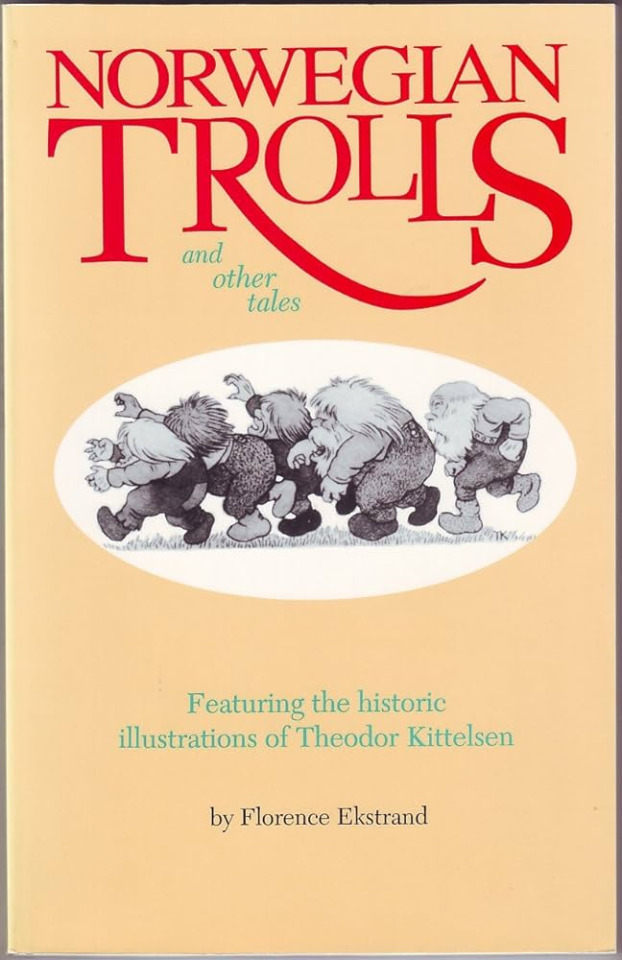
G. Fox, The Archaeology of the Cambridge Region
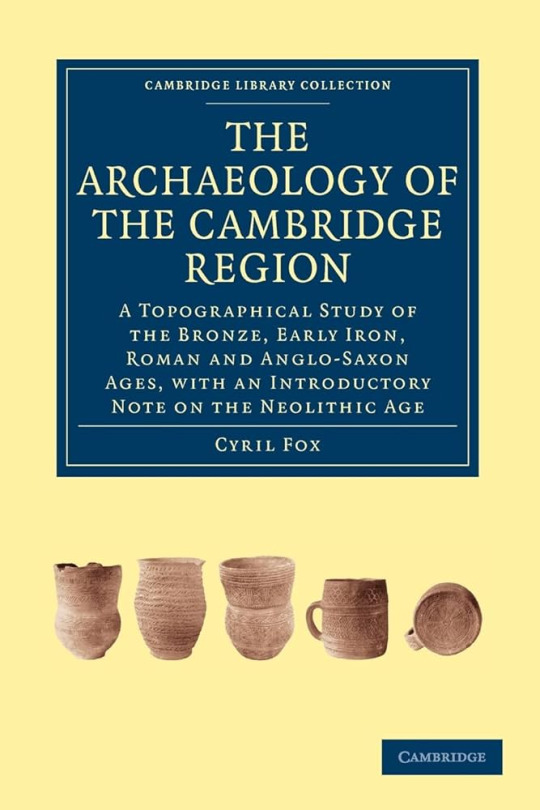
Edward L. Gardner, Fairies

M. Geoffrey Hodson, The Kingdom of the Gods

Sir Arthur Conan Doyle, The Coming of the Fairies
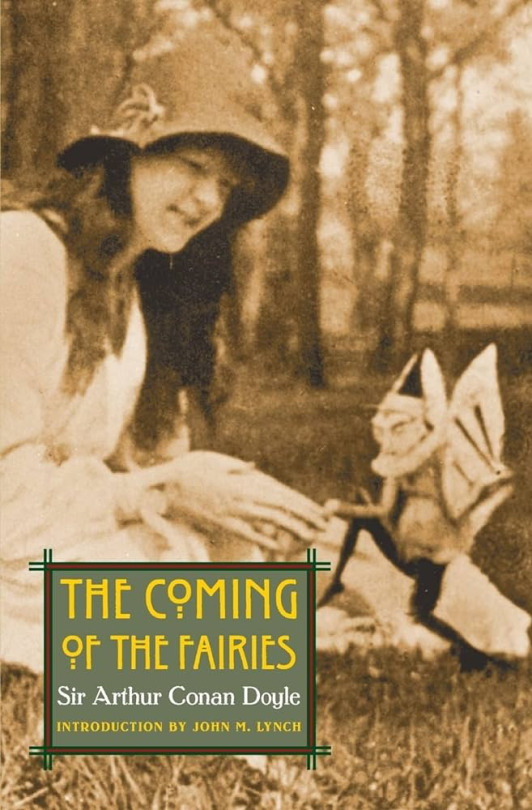
Walter Burkert, Ancient Mystery Cults

Sabine Baring-Gould, Curious Myths of the Middle Age
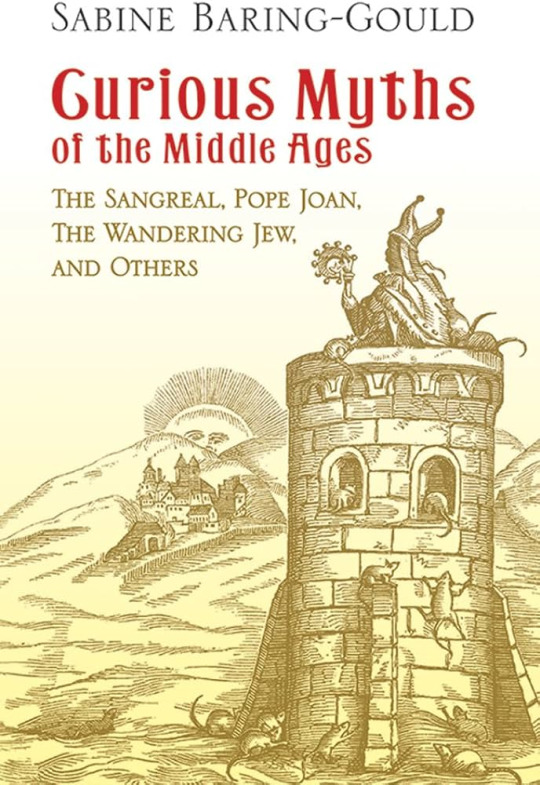
#pierre dubois#bibliography#book list#resources#fairy tales#fairytales#book resources#mythology#folklore#folklores#fairies#fairy#fairy book#mermaids
16 notes
·
View notes
Text
Article: "Merfolk: Sea People of Folklore and Legend"
Featured in the lore of many human cultures, merfolk were said to be people of the sea, although some resided in freshwater. In their most usual form, these beings appeared humanoid from the waist up and pisciform from the waist down. However, some chronicles and tales presented variations from this standard. At times hostile, at other times helpful, merfolk interacted with land-dwellers in various ways. Certain stories even spoke of marriages between merfolk and mortals, unions that could produce lines of human descendants. With potential links to ancient gods, goddesses, and monsters, merfolk have been a fixture of human legends for ages, but some accounts suggest that they are more than mere creatures of legend. Surprisingly enough, various historical records describe actual encounters with these aquatic entities, According to some reports, such encounters have even persisted to the present day.
The origins of merfolk lore might be as murky and difficult to plumb as the ocean depths themselves, but possible precursors to the merfolk of later chronicles and tales may be found in ancient myths and legends. Oannes, god of wisdom who granted the ancient Babylonians the gift of culture, appeared as a human-fish hybrid (Sykes & Kendall, 1993). The Philistine god Dagon and the Syrian goddess Atargatis were also depicted as prototypical merfolk (Matthews & Matthews, 2005). Mythographer Robert Graves traced a connection between mermaids and sea-born goddesses Aphrodite and Marian (Matthews & Matthews, 2005). The Greek scholars Nicholas Polites and Stilpon Kyriakides argued that the mermaid of modern Greek lore, the gorgona, shares features with the siren of Classical Greek myth (Simpson, 1987). Notwithstanding the fact that medieval authors did conflate the sailor-luring siren of ancient lore with the northern mermaid, Classical depictions portrayed the siren not as half-woman, half-fish, but as a monster that possessed a woman’s head and torso atop a bird’s body (Rose, 2000).
Although the true nature of alleged links between ancient gods and merfolk of later times may be doubtful, there is no doubt that such beings feature in folklore and legends around the world, from Ireland to New Ireland, New Guinea. The usually peaceful Irish merfolk known as merrows wore magical red caps that allowed them to shape-shift and travel back-and-forth between their undersea realm and dry land (Rose, 1996). The Manx mermaid ben varrey exhibited two conflicting natures, one a benevolent finder of treasure, the other a malevolent enchanter of men (Matthews & Matthews, 2005). The handsome Danish merman havmand treated those mortals he encountered with kindliness, while his female counterpart havfrue could be either helpful or harmful (Rose, 1996). Like the sirens of ancient myth, the alluring Swedish mermaids called sjörå entranced boatmen at sea and destroyed both mortals and their vessels (Marriott, 2006). The cannibalistic mermaids of Portuguese tales went one step further and devoured those lured into their watery abode (Marriott, 2006). The far more benevolent ningyo of Japanese lore brought peace and dispelled bad luck (Matthews & Matthews, 2005). Clad in cowrie-shell jewelry, the bonito maidens of the Solomon Islands acted as caretakers of both bonito fish and lost ivory fishing hooks (Rose, 1996). The singing ri of New Ireland tradition resided among the mangroves and along the strand (Rose, 2000). On the east coast of Canada, the halfway people of Micmac legends alerted courteous fishermen of impending storms (Rose, 2000).
Merfolk through the ages and across the globe have traditionally appeared as humanoids with fishy tails, exemplified by the beautiful-but-deadly comb-and-mirror-wielding sea maiden of the English folk song “The Mermaid” (Briggs, 1978), but there are variations to this tradition. The 1st century author Pliny described mermaids as being completely scaly head-to-tail (Rosen, 2008). The medieval Irish Annals of the Four Masters told of a truly monstrous mermaid said to have measured a whopping 160 feet long (Matthews & Matthews, 2005). Another oversized mercreature featured in a report made to Bishop Pontoppidan of Bergen in 1719 that described a human-faced seal-like beast 28 feet long (Rose, 2000). Male merrows appeared downright hideous in aspect, possessing green-coloured hair, teeth, and skin, pointed red noses, and piggy eyes (Rose, 2000). On occasion, the Danish havmand was said to have had blue skin (Matthews & Matthews, 2005). Instead of looking like a human woman from the waist up, the Japanese ningyo could appear as a huge fish with a woman’s head (Rose, 2000).
Along with the varying physical descriptions of merfolk, different human cultures expressed different views regarding what merfolk symbolised. In medieval Europe, mermaids represented deceit and were believed to be in league with the Great Deceiver himself, the devil (Rose, 2000). Additionally, the medieval church considered mermaids to be symbols of vanity, lust, and the soul-endangering aspects of femininity and sex (Rosen, 2008). In Tudor times, the word “mermaid” became synonymous with the word “prostitute” (Franklin, 2002). Conversely, the Afro-Brazillian Batuque cult saw their aquatic jamaína and imanja as intermediaries between mortals and angels (Rose, 1996). The Japanese thought of their ningyo as a positive entity, a protector of the land (Matthews & Matthews, 2005).
As has been touched upon above, merfolk in various locales and circumstances sometimes dealt with land-dwelling mortals in a less-than-beneficial, or even outright malevolent, fashion. The otherwise friendly male merrow named Coomara captured the souls of drowned sailors in cages in the mistaken belief that he was performing a good deed sheltering the souls and keeping them warm and dry (Croker, 1882). Mermen of a more baleful nature were believed to conjure terrible storms and sink ships (Rose, 2000). At times, the female of the species also acted in a destructive manner; the subject of the folk song “The Mermaid” sent a ship of doomed souls to the bottom of the ocean (Briggs, 1978). The Norwegian havfine herded the waves and wrecked vessels foolish enough to be caught asea when storms rolled in (Matthews & Matthews, 2005). The Scottish lake-dwelling mermaid encountered by the youthful Laird of Lorntie proved to be a downright bloodthirsty creature that would have feasted on the young laird’s blood had his loyal servant not pulled him from the loch’s waters (Briggs, 1979).
Of course, not all merfolk treated humans poorly; some had favourable and even intimate dealings with humankind. According to Danish lore, a prophesying havfrue foresaw the birth of Christian IV of Denmark (Matthews & Matthews, 2005). In one Scottish story, a young man learned how to cure his ailing love with an infusion of mugwort when a mermaid surfaced and sang of using the herb to prevent the girl’s death by consumption (Briggs, 1978). A mermaid that rose from a Renfrewshire pool as a funeral procession crossed a stream advised the mourners how to use both mugwort and nettle to ward off fatal illness (Briggs, 1978). In the tale “The Old Man of Cury”, a stranded mermaid rescued by an old man granted her saviour the gift of healing (Briggs, 1978). The title mortal of “Lutey and the Mermaid” was rewarded with similar benefits when he aided a mermaid, but found himself lured into her watery abode nine years later (Briggs, 1978). Along with knowledge of healing herbs, rescued mermaids could also warn of impending storms (Rose, 1996). On occasion, female merrows wedded mortal men and gave rise to a line of human descendants who possessed webbed fingers and scaly legs (Briggs, 1979). A mermaid was said to number among the ancestors of the McVeagh clan of Scotland (Franklin, 2002).
Apart from marriages and other relations between merfolk and mortals, some stories told of humans transformed into sea people. According to a popular Greek legend, Alexander the Great’s sister Thessalonike turned into a mermaid when, grief-stricken by the death of her conquering sibling, she attempted suicide by throwing herself into the Aegean Sea (DocumentaryMakedonia, 2013). Lí Ban, the pagan subject of a 12th or 13th century Irish tale, underwent a magical metamorphosis from human woman to mermaid after the majority of her kin were drowned in a flood (Ó hÓgáin, 2006). According to a certain Irish legend, pagan crones became mermaids when Saint Patrick expelled them from the land (Franklin, 2002). In the Samish story of Ko-kwal-alwoot, a maiden became enamoured with a merman who insisted on taking her as his bride and who eventually transformed her into a sea-dweller like himself (Matthews & Matthews, 2005).
Beyond the myths, legends, and folktales about merfolk told over the centuries by many different storytellers around the globe, sailors and fishermen across the ages have reported real-life sightings of fishy-tailed humanoids. Christopher Columbus wrote that he spied three less-than-lovely mermaids off the coast of what is now the Dominican Republic in January 1493 (Salaperäinen, 2016). In 1560, the bodies of several mermaids netted off the coast of Ceylon underwent dissection at the hands of a learned physician who concluded that, externally and internally, the anatomy of the merbeings resembled that of humans (Matthews & Matthews, 2005). Henry Hudson recorded that two of his crewmen spotted a white-skinned black-haired mermaid in 1608 (Cohen, 1982). In 1723, a Danish Royal Commission tasked with proving that merfolk existed only in myths and legends ended up running across an actual merman near the Faroe Isles (Matthews & Matthews, 2005). In 1830, residents of the isle of Benbecula in the Hebrides found the body of a small dark-haired white-skinned mermaid with “abnormally developed breasts”, perhaps the same creature that had been seen and injured at Sgeir na Duchadh a few days earlier, washed ashore at Culle Bay (Munro, 2016). Three years later, natural history professor Dr. Robert Hamilton described the capture of a short-haired monkey-faced mermaid offshore of Yell in the Shetland Isles (Munro, 2016). During a few notable summers around 1890, hundreds of eyewitnesses claimed to have seen the so-called Deerness Mermaid, a black-headed white-bodied creature that appeared like a human when swimming in the waters of Newark Bay, Orkney (Towrie, n.d.).
Believe it or not, in certain regions of the world sightings of and belief in merbeings have persisted right up to the present day. In 1947, an elderly Hebridean fisherman reported sighting a mermaid combing her hair near the shore of the Isle of Muck (Matthews & Matthews, 2005). In June 1967, passengers aboard a ferry travelling past Mayne Island, British Columbia, observed (and one snapped a photograph of) a blonde-haired dimple-faced mermaid with the tail of a fish or porpoise sitting upon a shoreside rock (Obee, 2016). In January 2008, several South Africans who had been relaxing near the bank of the Buffelsjags River at Suurbraak claimed they encountered a river-dwelling mermaid with white skin, black hair, and hypnotic red eyes known locally as the Kaaiman (Pekeur, 2008). In 2009, dozens of eyewitnesses caught sight of a mermaid porpoising and performing aerial acrobatics off the beach of Kiryat Yam, Israel (“Is a Mermaid”, 2009). As recently as 2012, workers at a dam in northern Zimbabwe insisted that mermaids were to blame for mysterious malfunctions and refused to continue their work until the harassing entities were appeased with a traditional beer ritual (Conway-Smith, 2012).
Merfolk number among the most widespread of legendary beings. Diverse cultures around the world have told stories of aquatic humanoid beings with piscine tails. Tales handed down from generation to generation attest to mankind’s relations with merfolk, for good or ill, throughout the ages. Perhaps such lore is merely the product of human imagination, but what are we to make of reports of actual sightings? Historic and more recent claims of seeing mermaids or mermen could be chalked up to mirages, misidentifications, hoaxes, or even mass hysteria. For instance, Columbus might have spied a trio of manatees. Witnesses who saw a mermaid on Mayne Island may have actually seen a human girl posing with a fake mermaid’s tail. Men who refused to continue work on a dam in Zimbabwe due to interference from mermaids might have fallen victim to mass hysteria. Whatever the truth of the matter, belief in merfolk has endured over time and continues to endure, in some locales, to this day. Regardless of the reality, merfolk continue to have a place in the hearts, minds, and imaginations of their land-dwelling mortal counterparts.
References
Briggs, K. (1978). The vanishing people: fairy lore and legend. New York, NY: Pantheon Books.
Briggs, K. (1979). Abbey lubbers, banshees, and boggarts: an illustrated encyclopedia of fairies. New York, NY: Pantheon Book.
Cohen. D. (1982). The encyclopedia of monsters. New York, NY: Dodd, Mead & Company.
Conway-Smith, E. (2012, February 12). "Zimbabwe mermaids appeased by traditional beer ritual". PRI. Retrieved from https://www.pri.org.
Croker, T. C. (1882/2008). Irish fairy legends. Mineola, NY: Dover Publications.
DocumentaryMakedonia. (2013. May 24). The legend of Thessalonike, a mermaid who lived in the Aegean sea [Video file]. Retrieved from https://www.youtube.com/watch?v=pHSOj...
Franklin, A. (2002). The illustrated encyclopedia of fairies. London, England: Collins & Brown.
"Is a mermaid living under the sea in northern Israel?" (2009, August 12). Haaretz. Retrieved from https://www.haaretz.com.
Marriott, S. (2006). The ultimate fairies handbook. London, England: Octopus Publishing Group.
Matthews, J., & Matthews, C. (2005). The element encyclopedia of magical creatures. London, England: HarperElement.
Munro, A. (2016, March 16, updated March 17). "The myth of the Hebridean mermaid". The Scotsman. Retrieved from https://www.scotsman.com
Obee, D. (2016, January 8). "Dave Obee: mermaid had no legs, but story does". Times Colonist. Retrieved from https://www.timescolonist.com/
Ó hÓgáin, D. (2006). The lore of Ireland: An encyclopaedia of myth, legend and romance. Woodbridge, England: The Boydell Press.
Pekeur, A. (2008, January 16). "Mysterious ‘mermaid’ rises from the river". IOL. Retrieved from https://www.iol.co.za.
Rose, C. (1996). Spirits, fairies, leprechauns, and goblins: an encyclopedia. New York, NY: W. W. Norton & Company.
Rose, C. (2000). Giants, monsters, and dragons: an encyclopedia of folklore, legend, and myth. New York, NY: W. W. Norton & Company.
Rosen, B. (2008). The mythical creatures bible. London, England: Octopus Publishing Group.
Salaperäinen, O. (2016). A field guide to fantastical beasts. New York, NY: Metro Books.
Simpson, J. (1987). European mythology (library of the world’s myths and legends). New York, NY: Peter Bedrick Books.
Sykes, E., & Kendall, A. (1952/1993). Who’s who in non-classical mythology (Rev. Ed.). New York, NY: Oxford University Press.
Towrie, S. (n.d.). "Monsters of the deep: mermaid accounts and sightings". In Orkneyjar: The Heritage of the Orkney Islands. Retrieved from http://www.orkneyjar.com/folklore/mer...
(Article originally published Jan 5, 2020, in Altered Reality Magazine)
#writers#writers and poets#writers on tumblr#writerscommunity#nonfiction#article#merfolk#merbeings#mermaids#mermen#folklore#legend
3 notes
·
View notes